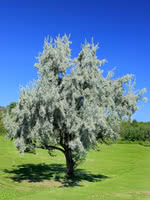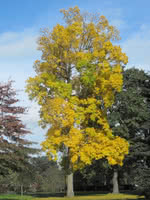Mon-Fri 9am - 5pm Mountain time
Russian Olive vs Bitternut Hickory
Elaeagnus angustifolia
Carya cordiformis
NOT AVAILABLE THIS SEASON - MIGHT RETURN
Russian Olive is a medium-sized deciduous tree that has attractive silvery coloured foliage with small yellow flowers that emit a fragrant sweet smell.
It is drought and salt tolerant, and works well as a shelterbelt species. Russian Olive can also be used to combat erosion.
Note: although Russian Olive is planted as an attractive boulevard tree in many northern areas, in warmer areas it can invade watersheds and is considered invasive. Please do some research and plant the right tree in the right place.
Bitternut Hickory is a large deciduous tree that makes a great shade tree for yards and parks. This tree is native to Eastern North America. Although it produces nuts, they are bitter and inedible. Some consider this wood to be the best flavour for smoking meats.
Plant Bitternut Hickory in it’s forever home. It is difficult to transplant due to its long taproot, and may not survive.
The wood is strong and has historically been used for wheels, ladders, and furniture.
Russian Olive Quick Facts
Bitternut Hickory Quick Facts
In row spacing: 1.8 - 2.4 m (6 - 8 ft)

